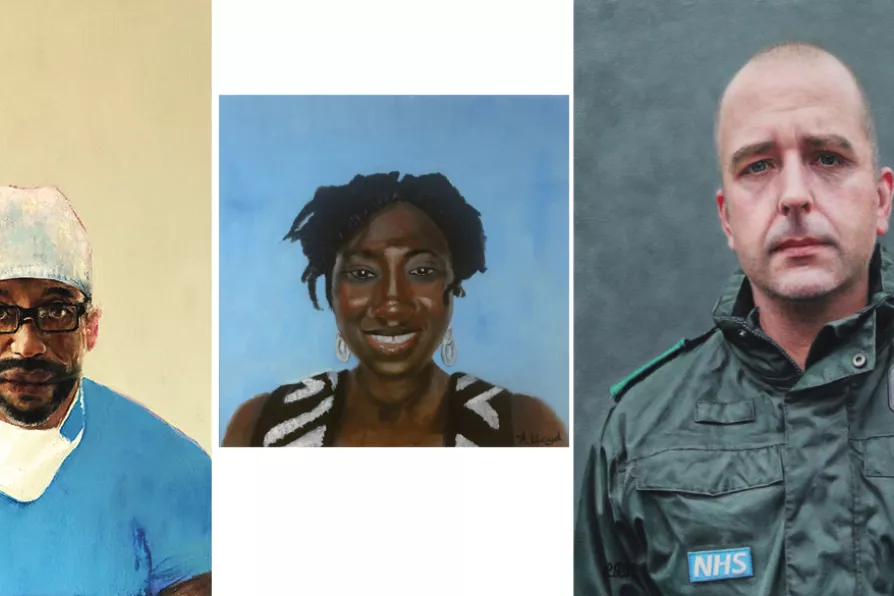The bard pays homage to his two muses: his wife and his football club

 (L to R) Mr Charles Nduka by Richard Twose; Dr Cole by Adrian Lloyd; Liam Halliwell by Laura Quinn Harris
(L to R) Mr Charles Nduka by Richard Twose; Dr Cole by Adrian Lloyd; Liam Halliwell by Laura Quinn Harris
Portraits for NHS Heroes
initiated by Tom Croft
Bloomsbury Caravel £25
COMMISSIONED portraits of working-class people are rare. So it is with great pleasure that I received Tom Croft’s book of portraits of NHS workers, painted free by volunteer artists to honour their selfless heroism during the Covid-19 pandemic.
Men and women, young and old, Caucasians, Asians, Africans and Afro-Caribbeans return our gaze with smiling or worried expressions. Some look exhausted, some look anxious, some offer hope. Mostly dressed in their uniforms, only protected from the deadly virus by masks, visors and/or plastic aprons, they offer their expertise to heal others.
The images are accompanied by short texts explaining who the workers are and how they work to save lives during this plague year. Portrayed by Adrain Lloyd, Doctor Cole who originated from Sierra Leone and became a nurse before becoming a GP, now trains other GPs. Her joyful smile and glowing skin radiate positivity and hope.
The NHS’s multiculturalism and internationalism shine out. In Richard Twose’s portrait Mr Charles Nduka, a consultant plastic surgeon, engages our gaze with earnest sincerity mingled with sorrow, through his wide, oblong spectacles.














